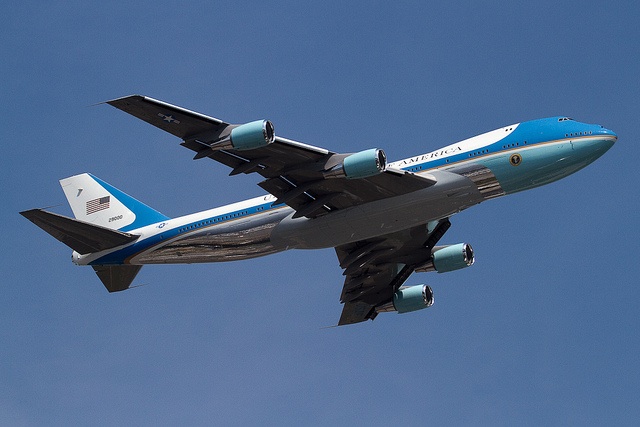Former Air Force One pilot Col. Mark Tillman, who was on the job during the September 11, 2001, terrorist attacks, will be speaking about his experience that day on the 18th anniversary of 9/11 this Wednesday, September 11 at 7 p.m., as part of the EAA Aviation Museum Aviation Adventure Speaker Series.
Tillman, who joined the U.S. Air Force in 1979, flew T-37s and C-130s prior to his selection for service at the 89th Airlift Wing out of Joint Base Andrews in Maryland. At that point, he flew Gulfstream jets before his selection to Air Force One as a co-pilot during the George H.W. Bush administration. Tillman would eventually retire from the Air Force at the conclusion of George W. Bush’s second term in 2009 after nearly two decades with Air Force One, eight of them as commander.
Flying Air Force One, a customized Boeing 747-200B (officially designated by the Air Force as the Boeing VC-25A), is a highly orchestrated process as Tillman explained, one that is planned out to the second.
“The typical day for us is you’re flying a 747, a commercial aircraft. So, the difference is everything is choreographed when you fly,” Tillman said. “You do everything to the second; it’s an extremely safe environment. So, two to three other Air Force pilots go out to the location that you’re going to fly to, and they run a 200-300 question checklist to measure all the distances, obstacles, barriers, etc. And then, they give you a brief before you fly as to how you will land and how you will taxi so that we make sure nothing goes wrong.

“So, a typical day at Air Force One was you’d run over that package with the navigators and the other pilots you’re flying with and the flight engineer, anybody up in the cockpit,” he said. “And you’ve run over step by step each one of those movements to make sure that when you executed it, everybody knew what was going on.”
Unlike his job every other day of the year, 9/11 threw Tillman, and everyone else with Air Force One, for a loop. With so much uncertainty surrounding the terrorist attacks on the World Trade Center and the Pentagon and what to do next, it was unlike anything he or anyone else had experienced before.

“There was a lot of fog of war,” Tillman said. “Initially we saw on the television the towers being attacked, and then we saw basically or heard that the Pentagon had been attacked. But there was a lot of fog of war in the sense that initially when the towers got hit, we were told it was a light aircraft that hit the first tower. And we had no idea of what was going on up in the Northeast. We subsequently found out after the second tower, everybody got involved after the second tower got hit. We got information from the FAA, Secret Service, everybody in Washington, D.C. And everything started happening after the second tower was attacked, and we started moving into position to relocate the president of the United States. From that point forward, there were a lot of things that needed to be accomplished to keep the president safe.
“Those are the things I’m going to talk about [at the speaker series presentation], what actually happened on that day,” he said. “Failure of communications between us and the ground, just due to a saturation of the communications lines. Differences that occurred between first responders and letting the president know what’s going on. It was keeping the president airborne because we weren’t sure what the threats were against the president. So, we kept him moving, kept decoying. And that was primarily the whole responsibility of the day, to keep him safe, but also keep them in touch with the vice president and the command authority so that he not only could run the nation, but he could make decisions associated with the threats that were occurring against the United States.”

Following 9/11, security and procedures for operating Air Force One changed dramatically, in part due to a National Geographic television program that aired shortly beforehand.
“Security was incredible after September 11,” Tillman explained. “Normally under President Clinton, we would go to locations and spend two or three days. With President Bush, that just wasn’t an option anymore because you brought in such a level of security especially overseas that you pretty much would tie up a city. So, we just couldn’t do that anymore. So, we did a lot of out and back. You’d fly into a major city, spend time in the city, and then you’d leave the city because you didn’t want to tie everything up as far as traffic, etc. and bringing in high security. We just became more aware of what was going on security-wise all around the world, which before we are aware of it, we countered it, but now we actually laid in a lot of procedures to make sure nothing would occur again.
“Security was tremendous after that point,” he said. “The other thing that I’m going to talk about that occurred was shortly after September 11 it became obvious that the National Geographic special on Air Force One that had aired in August of 2001 told everybody how we operated at Air Force One. We got information from different security agencies that some of the terrorists were actually watching that video to see how we did our business. So from that point forward, we had to change everything.”
Wednesday’s event is free to EAA members, first responders, and veterans, and is just $5 for nonmembers.

